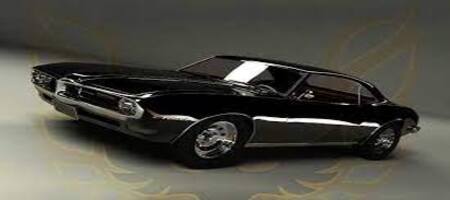The GTO and the era of muscle cars
In 1964, Pontiac had a coupe in its range, the Tempest Le Mans. And for that model, a strange option called, very cheekily, “GTO” arrives that year. This option and these acronyms, borrowed from Ferrari, marked a before and after in the American automobile industry since they are the beginning of the era of muscle cars.
Three engineers of the brand, among whom was a certain John De Lorean, devised the GTO project. They decided to fit the Tempest with the Bonneville’s 389 ci (6.5 liters) V8 in a body that, according to GM’s internal policy, could not receive an engine larger than 5.4 liters (330 ci). They got around that ban by proposing it as an option instead of the Tempest’s 326 ci (5.3-liter) V8. The reluctance of the leaders meant that the initial production will be limited to 5,000 units.
1972 Pontiac LeMans GTO, one of the last “real” GTOs in Pontiac history.
The success was such that the GTO, duly updated and with new models, remained on sale until 1974. The original GTO thus created the muscle car segment. Meanwhile, Ford has jumped into that segment with increasingly powerful versions of the Mustang, sometimes with the help of Caroll Shelby. Since then, Pontiac has been synonymous with sports cars, knowing success with its Firebird and TransAm.
1979 Pontiac Firebird Trans Am. Except for the specific front end, the relationship to the Chevrolet Camaro is obvious.
The 1979 energy crisis forced Pontiac to focus on cheaper, not-so-fun models. In this context, the leaders of GM decided to create an economical, small car, ideal for going from home to work and back. None of the GM brands really had experience with this type of car, which led to the creation of some of the most unusual cars in American production.
The one that covers a lot…
To make it economical, they opted for a 2.5-liter 4-cylinder injection engine associated with a 3-speed automatic gearbox (with very long developments). In order for its aerodynamic efficiency to be the best on the market, it was decided to mount the engine in a central rear position, thus leaving a very low front section, that is, very aerodynamic. And so the Pontiac Fiero was born.
In 1985, the oil crisis was already a distant nightmare and the public wanted more power in their cars. And also in the Fierce. The tracks were widened, the suspensions modified and a 2.8-liter V6 associated with a 5-speed manual gearbox developed by Getrag was installed. And on the rebound, the “utility” became the only mass-produced rear mid-engined American sports car.
In 1988, production of the Pontiac Fiero ceases. That same year, the Pontiac city plant, which made the Fiero, closed its doors. Today, that episode is considered the beginning of the end for Pontiac, both for the city and for the brand .
In the 1990s, Pontiac sales steadily declined, the brand increasingly focusing on small, old-fashioned models, such as the Pontiac Le Mans (a local version of the Daewoo Nexia, itself derived from the Opel Kadett E 1984) and minivans, such as the famous Trans Sport that came to know some success in Europe. collage assignment










